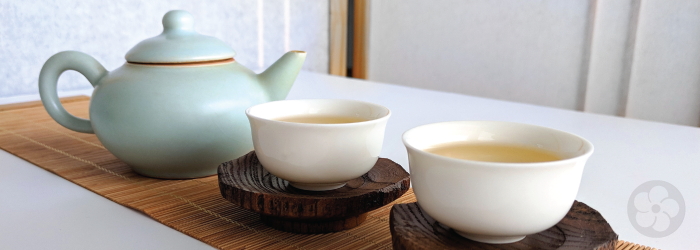Focus on the Finish: What is Hui Gan?

In wine tasting, the ultimate test of quality is the lingering flavor that remains on the palate long after the tea has been swallowed. This characteristic is called the ‘finish’, and the longer its subtle complexities linger on the tongue, the better the quality of the wine.
The same concept is easily applied to tea - while many mediocre teas can present a pleasant taste on the front of the tongue, it is only those of truly high quality that leave a delightful lingering finish in the back of the throat. In Chinese, tea drinkers often call this quality the hui gan, or ‘returning sweetness’. But as with many other Chinese tea terms, the specific translation of this phrase is debatable. What does it taste like? Does every tea have it in varying degrees, or is it only found in certain tea types? How is it different from what we call the ‘finish’ in English?
How to Taste the Finish
Before we start thinking too hard about the esoteric meanings of translated Chinese phrases, take a moment to brew your favorite tea and practice tasting the finish. To do this, start with a small-volume infusion to create a concentrated brew. Take a small sip and slurp slightly to aerate the tea in your mouth and coat your palate. (Or simply roll the tea around your tongue until you can taste it in all parts of your mouth.)
Now swallow your sip, and exhale deeply through your nose. What flavors still linger on your tongue? What flavors return to the back of your throat with the exhale? How long do these flavors last?
Learn how to train your palate to recognize flavors with these four easy steps >>
What is Hui Gan?
No matter the quality of your tea, the aftertaste provides a different experience from the initial sip. In English, we usually describe the presence of the finish on a scale from subtle to bold. This distinction tells us little to nothing about what flavors to look for - only that some flavor exists (or doesn’t). In contrast, the Chinese term hui gan is more precise, describing the presence of a specific combination of flavors.
But connoisseurs debate what exactly that specific combination of flavor tastes like - or at least how to describe it in English. General agreement has been reached on a few points:
- Hui gan is a pleasant flavor that appears only after an initial bitterness.
- The flavor descriptor gan, despite being frequently translation as “sweetness”, is not associated with the sweetness of sugar.
- Rather than a straightforward flavor, hui gan most often describes a combination of flavor and sensation.
Many experienced tea drinkers describe hui gan as a cooling sensation in the back of the throat, which returns only after the tea is swallowed. Others describe it as an “echo” of the tea’s main flavors, or a sweetness that lingers on the palate.
Personally, we prefer to borrow the term ‘finish’ from the wine world, as it invokes the quality of lingering flavor that we aim to discuss when tasting, without assigning any expectation to the experience.
Judging Quality with the Finish
In any case, whether you call it the hui gan, the finish, or the aftertaste, the added complexity (or lack thereof) in these final flavor layers can make or break a tea. The notes that linger on the back of the tongue and remain in the back of the throat are often the most interesting, revealing unique fruity fragrances, rich, creamy textures, and subtle natural sweetness.
These characteristics are typically the biggest difference between a mass-produced tea and a single origin harvest, since these complexities can only be created in the tea plant through natural slow growth. While artificial flavors or quick-growing plants can produce a perfectly palatable flavor on the front of the tongue, a focused tasting can quickly reveal the disparity in depth on the finish.
What kind of finish do you look for in a tea? Creamy and sweet or dry and persistent? Let us know in the comments!
Sign up for our newsletter to get blog updates in your inbox!






Comments on this post (0)